#Enigmatic Folklore
Text
Embracing Elegance: The African Lilac Quartz Phenomenon
Imagine immersing yourself in the mesmerizing aura of the evening sky, enchanted by a stone that fuses lavishness with attainability. This isn’t a product of fantasy or an elite gem reserved for the A-listers—it’s tangible and as genuine as your penchant for chic sophistication. Introducing the African Lilac Quartz: the gateway to affordable elegance that captivates with its charm. Ready to delve into an opulent realm that doesn’t demand a king’s ransom? Let’s embark on this sartorial journey, setting your fashion aspirations alight.
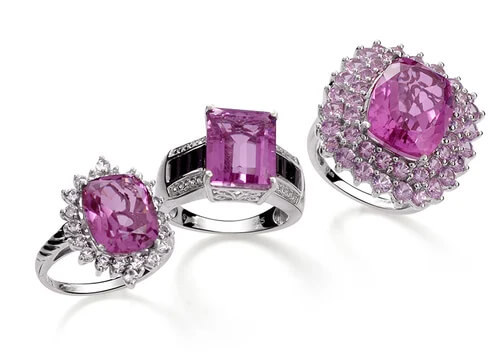
#trending#African Lilac Quartz#African Lilac Quartz Phenomenon#Embracing Elegance#Emotions#Enigmatic Folklore#Magnetic Charm#Price Tag#Styling Possibilities#Touch of Luxury
2 notes
·
View notes
Text
Nestled in the heart of the Mississippi Delta lies Yazoo City, a town steeped in a rich tapestry of history, culture, and a particularly intriguing legend – that of the Yazoo City witch. This story, transcending generations, interweaves the mystical with the historical, casting a spell over the locals and visitors alike.
#Chains#CommunityEvents#CulturalHeritage#Curses#Enigmatic#FolkTales#Folklore#GhostStories#GlenwoodCemetery#HistoricalEvents#History#LocalLegends#Mississippi#MississippiDelta#MysteriousFire#Mystical#Storytelling#Supernatural#Superstition#UrbanLegends#Witch#WitchLegend#YazooCity#YazooRiver#frnwh
1 note
·
View note
Text
Dracula Unveiled: Exploring the Eternal Legend of the Enigmatic Vampire
In the depths of darkness and the embrace of the night, one figure has captivated our imaginations for centuries – Dracula, the iconic Prince of Darkness. With his charm, mystery, and insatiable thirst for power, Dracula has become an immortal symbol of the vampire archetype. In our latest podcast episode, we embark on a thrilling journey into the realm of Dracula, delving into the origins of his…

View On WordPress
#Bram Stoker#Dark fantasy#Dark storytelling#Dracula#Enigmatic characters#Gothic literature#Horror fiction#Immortality#Literary analysis#Podcast#podcasting#Pop culture icons#Supernatural beings#Vampire#Vampire adaptations#Vampire folklore#Vampire legend#Vampire mythology
0 notes
Text
Dracula Unveiled: Exploring the Eternal Legend of the Enigmatic Vampire
In the depths of darkness and the embrace of the night, one figure has captivated our imaginations for centuries – Dracula, the iconic Prince of Darkness. With his charm, mystery, and insatiable thirst for power, Dracula has become an immortal symbol of the vampire archetype. In our latest podcast episode, we embark on a thrilling journey into the realm of Dracula, delving into the origins of his…

View On WordPress
#Bram Stoker#Dark fantasy#Dark storytelling#Dracula#Enigmatic characters#Gothic literature#Horror fiction#Immortality#Literary analysis#Podcast#podcasting#Pop culture icons#Supernatural beings#Vampire#Vampire adaptations#Vampire folklore#Vampire legend#Vampire mythology
0 notes
Text

Whispers of the Bonsai Giant: A Majestic Magical Tree!
Adobe Stock
#Tall#Magical#Tree#Bonsai#Enchantment#Ancient#Secrets#Mystical#Wonder#Arboreal#Marvel#Majestic#Whispers#Fantasy#Folklore#Mysterious#Enigmatic#Nature#Growth#Tranquility#Harmony#Beauty#Imagination#Spirituality#Serenity#Balance#Timeless#Magical Realism#Intrigue#Elegance
1 note
·
View note
Text
KNIGHT ETHNIC GROUPS, ORDERS AND CULTURES: A GUIDE
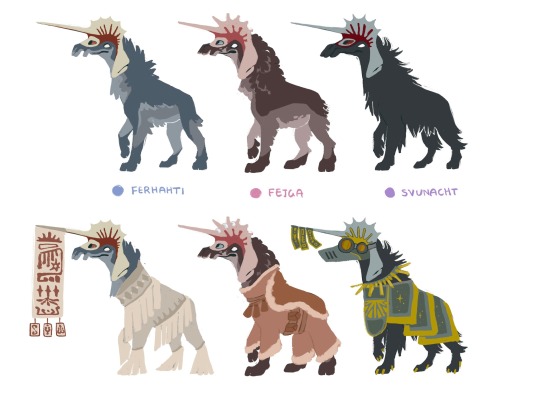
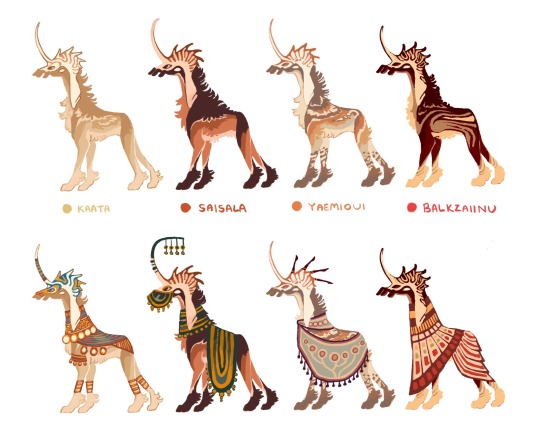
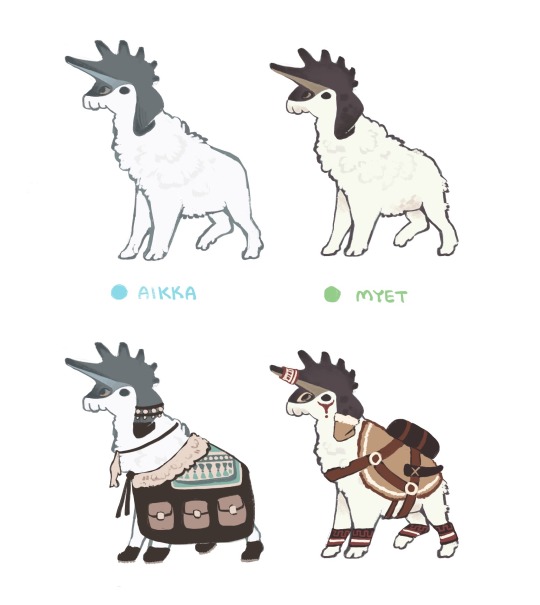
MAP OF ETTERA (Knight Homeplanet)

Standard map [continents shown]

Regional map [territories shown]
✦ ✦ ✦ ✦ ✦ ✦
I have here a weeks worth of writing and art because I for some reason enjoy torturing myself! I've been slaving away at this for so long but it's finally done and polished. So! As promised, I'm gonna talk a bit about the different Knight cultures/ethnicities, territories and general social structure.
Knights are one of my alien sophont civilisations from my Vivere 44 headworld. Here are more links from my previous posts:
Introductory post
Knight deities
Knight languages and names
With that being said, worldbuilding textwalls below the cut!
____
First, an explanation of the maps.
CONTINENTS
There are three main continents on Ettera. The two polar landmasses are Thannoeh in the northern end and Nahrui in the southern end. Thannoeh is divided by east and west, and is home to the two major Polar Knight nations. Nahrui is not occupied by any, aside from explorers or scientists. For many Knights, it is a strange, enigmatic land and a topic of great curiosity. In the middle is Val-srat; the central continent inhabited by Mountain and Plains Knights. The landmass is named as such because it is often represented in folklore as a Knight, with Valazear (the ‘Host’) being the southern Plains territories and Srati (the ‘Helmet’) being the northern Mountain territories. The Ihmna Stretch is the section of land connecting the two countries - ‘Ihmna’ is the Ferhahti word for the Integrator organ which joins the host and helmet’s consciousness.
Plant life on Ettera takes on hues of red and orange.
____
Before I get into the different ethnicities, I should elaborate more on how Knight Orders are structured and the different titles; some of the clothing articles are specific to status.
SOCIAL STRUCTURE
Most Knights live in groups called ‘Orders’, which I talked more about in this ask.
The standard roles for an Order are as follows:
Commander - Makes decisions, protects and supports the group. Commanders lead the Order across difficult terrain, plan out hunts, and take care of their members. A Commander might be chosen based on generational succession, experience, or strength. Depending on the rules of the Order, a Commander might be challenged by a Knight who desires their position, although only an elite or lieutenant would be permitted to do this. In more traditional and conservative orders Commanders are always Pike-forts.
Lieutenant - Second in command. The Lieutenant is the Commander’s primary advisor and runs the Order when they are unable to. A Commander may train their lieutenant to one day take their place as leader, or a lieutenant might serve multiple generations of Commanders without ever challenging them.
Elites - A selection of Knight soldiers who are exceptionally experienced, strong and fast. Highly respected by the rest of the Order and carry out important duties such as organisation. They have the highest chance of being the next lieutenant or Commander.
Soldiers - The main body of the Order, fully grown Knights who are proficient in all the skills necessary for survival. Soldiers are tasked with a variety of jobs to keep the Order healthy and running: they are also farmers, medics, entertainers, strategists, builders, etc.
Scouts - Scouts are Knights who make reconnaissance trips for the Order. Their job is to gather information about a potential area to settle or travel through. Scouts also have a range of other responsibilities, such as acting as lookouts, messengers, and taking care of Pages.
There are two types of Scouts - temporary and permanent. Temporary scouts are Squires (16-17 years) who have completed their training and are performing Expeditions, which they are required to do before becoming a full soldier. On Expeditions two or three Scouts will travel a certain distance away from the Order, sometimes miles away, to deliver goods to other Orders or to simply evaluate an area/route. Permanent scouts are lower-ranked Knights who are unable to become Soldiers, prefer a caretaker role, or have been relegated to the position.
Squires - Knights in training. Squires learn from a Soldier assigned to teach them. They may be tutored one-on-one, or taught in a group. They learn the ways of the Order and the world around them. Squires will often be assigned small hunting trips with their tutor, or cleaning jobs. Typically aged 7-15 years.
Pages - The youth of the Order, Knights aged 0-6 years. The pages are fiercely protected by every member of the Order. A newborn Helmet or Host will stay with their birth parent/s until they have assimilated, in which care duty is passed on to a permanent Scout. The Scout raises the Pages alongside several others until they are ready to become Squires.
This structure originated from Mountain Orders and spread to Plains and Polar regions a long time ago. Of course, not every Order follows this plan exactly, and there are countless variations. Some Knights don't live in Orders at all, and may live in pairs (which is common for travelling merchants and explorers) or small groups. Very rarely, a Knight may travel alone. This is the case for exiles.
____
You may already be familiar with the Mountain, Plains and Polar Knight regional varieties, but within these subspecies are various ethnic groups.
THE ETHNICITIES
✦ MOUNTAIN ✦
✦ Ferhahti [Ferhaht]
The Ferhahti Knights are an ethnic group located in the Ferhaht territory of Srati. Their thick fur is of various shades of grey and grey-blue. Their clothing styles are typically beige and tan, often complete with rectangular tassels and red accents. The Ferhahti have a ‘New Years’ festival called Khulaam in which they call upon Etteran spirits to bless them with good harvests, hunting and rain. During these festivals there is music, food, dancing and socialising with others. Allied Orders, usually 2-5, will come together to celebrate. Celebrations last five days. Alliances may be temporary or long-lasting, but the Orders will go on a hunt on the final day to bring down a large quarry. Oftentimes there will be a ‘Herald’ dancer who bears a flag on their horn, depicting glyphs of good fortune.
Since the Ferhahti and Kaata territories are neighbouring, and have no physical borders, Orders from both lands will often meet to trade goods and information. Many Plains-Mountain hybrids are of Ferhahti and Kaata descent due to the close proximity of the nations.
NOTE: Plains and Mountain Knights are capable of producing hybrid offspring, although they will be infertile. Neither Plains nor Mountain Knights can produce viable hybrids with Polar Knights.
✦ Fejga [Fejg]
Fejga Knights (pronounced Fej-ya) make their home in the Fejg archipelago. They are generally of a bulkier physique than other Mountain Knights, have a coat of thick fur and are well adjusted to chillier climates. They also sport a ‘saddle’ marking on their backs and are likely to have mottled/freckled patterns and blue eyes. Their Orders are partially seafaring, with many sailing from island to island in magnificent ships. Fishing is a large part of their lifestyles as the sea provides a stable source of food.
Their clothes are frequently made from leather and wool from domesticated animals. It is deceptively thin, as their pelts already provide natural insulation from the cold. Fejga Commanders wear three silver piercings on their Helmets.
✦ Svunacht [Svun]
Svunacht Knights live within the mountain-bordered territory of Svun and the island of Naahek. Orders have a special ceremony for choosing their Commander. The next in line, usually a chosen Host and Helmet born of the previous Commander and their partner, must journey across the Asall mountain range which borders Svun. It is a treacherous, long passage, and requires the Knight to wear a mask to block out the searing winds. They must also wear a spiked collar as a traditional accessory and safety measure to deter larger predators which roam the mountains. They are forbidden from carrying firearms, only armed with a knife, their wits, and natural defences. Ceremonial garments are required, passed down through generations, and three slips of fabric are worn on their horn for good luck: representing strength, wisdom and tenacity. The journey, called the Meha, is the final step in a long series of rigorous training for future successors.
The painting of Helmets is also a large part of Svunacht culture. It is typically only reserved for Commanders, Lieutenants or Elites.
★ PLAINS ★
★ Kaata [Kaat]
Kaata Knight Orders inhabit the deserts of Kaat. They are perfectly suited to desert life, their tan coats reducing heat absorbed from the sun. Kaata Knights make their clothing from woven fibres of plants that are garnished with gold pigments derived from a natural mineral found in the sands. They are especially known for their proficiency in fine crafts, and often trade jewellery to Ferhahti Orders across the Ihmna Stretch connecting Kaat and Ferhaht. Kaata clothing tends to be highly detailed and ornamental, with shiny beads adorning arm cuffs, necklaces, mandible rings and horn sleeves. The many gemstone and fossil deposits in Kaat are also incorporated into their styles. Like the Svunacht Knights, Kaata also paint their Helmets, although the practice is not restricted to any particular titles.
★ Saisala [Saisal]
Saisala Knights live in and around the deltas and rivers of Saisal, the southernmost territory of Val-srat. The area is filled with marshlands and everglades, and the weather is more wet and humid than the dry plains of Kaat. Saisala forts sport a dark reddish mane that grows right down their backs and bears some resemblance to maned wolves. Their pikes have hooked horns and sloping spines, as well as more ‘splotchy’ red stripes. Their Helmet eyes also have a pale ring around their pupils.
Saisala clothing styles are characterised by draping, ovular shapes and translucent sections of fabric. The green and gold drapes in the drawing are traditional wedding garments, complete with rounded tassels and a horn extension for pikes. The hanging ‘coins’ have engravings which tell a short but sweet poem.
★ Yaemioui [Yaemiou]
Yaemioui Orders live in a similar environment to Saisala Knights, in the wetland territories of Yaemiou. Their coats are pale like Kaata, but come in a greater combination of hues such as orange, grey and vermilion. Fun fact: all Plains Host pups are born with faint spots to help them camouflage, like lion cubs. Most lose these markings as they grow older, but Yaemioui hosts retain them even in adulthood. Their patterns are similar to painted dogs. The Yaemioui have a rich storytelling culture and have records dating back thousands of years.
Their clothing styles utilise dusky, non-bright colours that are usually two-piece. The outfit in the picture is worn by an elder Pike-fort who has carried and sired many offspring. The spine extensions are an indicator of age and experience, and a mark of high respect. The scarf around their neck depicts circles symbolising their Helmet children, and the circles on the larger cloth represent their Host progeny.
★ Balkzaiinu [Balkzaii]
On the island of Balkzaii reside the Balkzaiinu Knights, who have dark stripes on both their Hosts and Helmets and short curly fur. Unlike other Orders, Balkzaiinu communities rarely ever hunt - they were one of the first countries to develop farming and agriculture, and import a lot of domesticated animals to Saisal and Yaemiou. They are also the only country that has no Commanders in their Orders, and decisions are made by a council of higher-ups. They live in a tropical climate which receives lots of rainfall and cyclones. They are also masters in boat making and sailing, and contacted the mainland several centuries ago. Balkzaiinu have different decency standards than other Plains Knights, and in their culture it is considered proper to cover the neck area. Their clothing is generally layered and contains colourful, square designs.
✧ POLAR ✧
✧ Aikka [Ehtte Thannoeh]
Aikka Knights have domain over the Eastern section of Thannoeh. The polar word for East is Ehtte, and West Uesse. Since the country is so close to the Fegj archipelago, the two have been in contact for a long time.
Aikka have pristine white fur and a slightly bluish tinge to their Helmets. As with all Polar Knights, they are much smaller than their Plains or Mountain relatives, but are incredibly tough and hardy as a result of surviving in one of the harshest biomes. Ehtte Thannoeh is associated with scientific prowess, discovery and knowledge, and many famous Knight explorers are from Thannoeh. There are several research stations on Nahrui that are run and managed by Aikka; they have no difficulty working in the icy environment. Aikka Knights are also experts in carving, sculpting figurines and charms from the ivory tusks of marine animals. The outfit depicted in the drawing shows an Aikka Scout wearing a pendant with a carved basilosaurus-like animal for spiritual protection. These pendants are often given by parents to children. Their coat has six pockets for navigational instruments, goggles, knives, a spyglass, medical equipment and more.
✧ Myet [Uesse Thannoeh]
Myet Orders have less contact with other regions than Aikka. Residing in Uesse Thannoeh, Many of them live further inland. Myet Hosts have a more yellowish tinge to their fur and their Pike Helmets have a tan stripe. The Helmets also have a more rounded 'snout'. They have managed to domesticate a large predator which defends their camps and is used as a mount/companion. Like the Balkzaiinu, Myet Orders have a different structure than most, having two Commanders, usually a mated pair, and no lieutenants or elites.
Myet clothing is more minimal than Aikka styles. They usually cover the back with a ‘saddle’ and manipulators with gloves. The outfit drawn is of a Commander, distinguished by the ring of fabric around their horn and eye makeup. In their backpack they carry hunting weapons, and wear a knife sheathed at their side.
_________________
And that's a wrap! Thank you for reading, this project is truly a delight to work on. I leave you with some messy concept art I did a while ago for Mountain Knight clothing styles.

#read my lore boy#i got some asks about people wanting to make knight ocs which inspired me to finish this haha#vivere 44#speculative biology#spec bio#spec evo#speculative evolution#worldbuilding#writing#my art#art#illustration#artists on tumblr#knights#xenobiology#is this enough tags
927 notes
·
View notes
Text
The Witch Father

In traditional witchcraft, we often come across mentions of the enigmatic Witch Father. His Folklore is scattered, and there is little consensus to who He is. The mythology of Witch Father folklore is spread across centuries, hidden in tales of the Devil and in the transcripts from witch trials. He is a multifaceted being who rules over life, death, initiations, knowledge, and the untamed wilderness lurking at the edges of society.
The Witch Father is an archetypal Divine Masculine Spirit that illuminates life and is a lord of death. Witch Father is a catchall title for the myriad spirits witches have historically contracted with and have since been omitted by the witch trial transcripts across Europe.
He is most commonly known as the Devil in today’s craft. As we know him, The Witch Father is an initiator and holds the keys to our disinhibition towards pleasure. He opens the way to occult knowledge and gives us the opportunity to explore (legal) pleasures without the need for guild or shame. Walking with the Witch Father allows us to dive into the hidden realms and learn the Occult Arts to change our lives. He also allows us to revel in primal human desires.
As the Initiator into Witchcraft, the Witch Father takes on the mantle of the Light Betwixt the Horns. He comes into our lives and offers us the choice to go down this path and walk with Him. He grants us an understanding of magick, nature, and pleasure. He empowers us to uncover our Truth and the Truth of the World. As the initiator, some see the Witch Father as Lucifer. He is also the Serpent who revealed to Eve that the fruit from the Tree of Life will not cause her to die but will grant the wisdom of the universe.
The Witch Father allows space for us to free ourselves from the inhibitions placed on us by general society, and especially the church. He encourages us to rebel, sing, dance, and uncover wisdom. He leads the Witch’s Sabbath, which grants us a place to revel in the freedoms offered there. By leading us to this sacred experience, He fills his role as an emanation of the untamed wilderness, the primal subconscious of our most human desires. He gives us the Church of Nature. Taking the liturgical prayers of the Church and the Book of Psalms, mixing that with more ancient pagan animism, we are given access to a hidden power through His teachings.

Now, while I talk as if the Witch Father is a God, he is not. He is an ancient and powerful spirit who has led witches over the centuries and demands reverence. He is not all-powerful and is not a creator. He works his charms through magic and shapes the world. He is not a distant, impersonal being. He is immediate to us and is a mentor for us.
Disinhibition
At the Witch’s Sabbat, our spirits fly away to commune with Our Devil, other witches and spirits in His retinue. It was a place to mix business and pleasure. At the Sabbat, witches would learn new spells, come together to work rituals, learn new forms of magick from the Witch Father, and of course partake in enjoyment.
The Sabbath is a place of Initiation for new witches and also a place for learning new aspects of the craft. Once the business concludes, the Sabbat becomes a celebration. We may forget the staunch rules of mundane society and revel in our animalistic and beastial joys. There is singing, dancing, food and drink. We can indulge in these desires and these delicacies. All of which is orchestrated and gifted to us by the Witch Father.
The Wild
There is a deep connection between the Witch Father and Nature. They are synonymous with each other. He is an emanation of the land and its spirits. As Christianity became the dominant religion, and as society shifted further away from living in harmony with Nature, the figure of the folkloric Devil grew. He calls to us to return to the untamed lands and to forget the society that weighs us down. He offers liberation instead of our oppression.
The Witch Father, as Nature, holds a duality over life and death. He is life itself and the bringer of light. But he is also the Lord of Death and of shadows. As the year turns, we see both aspects and the cyclical nature of them. Death giving way to new life and of life giving way to death. He is destruction and creation. Death and resurrection.
Even His iconography and the existing descriptions that we have of the Devil show the immense connection He has to the Land. He is a shapeshifter comfortable in being a recognizable animal, a humanoid form, or even a hybrid. He reminds us of our baser instincts and that we are not above animals or the land just because we, as humans, have subjugated them for centuries.
He is the Horned one, the light betwixt the horns, Terra Pater, Primus Magus. And he has revealed himself to us in so many other forms throughout the centuries. It’s hard to pigeonhole the Witch Father as any one being, or to even say “this is what he looks like.” He’s shown us he is comfortable changing his shape on a whim. He takes on the mantles of mentor, guide, and is a safe space for us to let our guard down and find enjoyment outside of our mundane lives.
Old Scratch
Old Scratch is a more antiquated term for The Devil or Satan primarily found in the Southern United States and the South Midlands. This name has been memorialized in Faustian Folklore such as “The Devil and Tom Walker” and “The Devil and Daniel Webster” where our protagonist sells his soul to the devil for prosperity.
This reinforces the theme that our Witch Father, the Folkloric Devil, offers us a chance to change our luck and our lives. Now, in these stories, the protagonist is taken away and dragged into the fires of hell, but in the living practice of Traditional Witchcraft, it doesn’t happen that way. We see these stories as what happens when trying to break deals with the Otherworld. Contracts and Pacts made with Spirits should be kept up with. It’s imperative.
Black Shuck
In East Anglian folklore, Black Shuck is an omen of death. If you see him, it is said that you will die before the year is up, and if you meet his eye you’ll be dragged away.
The first mention of the Black Shuck is in “The Anglo-Saxon Chronicle” in 1127 where He is affiliated with a Wild Hunt that was in Petersborough from Lent through Easter. Later on, in the 1500s, he is said to have broken into a church and killed two paritioners while kneeling in prayer.
Here we see the Chthonic side of the Devil. He is a psychopomp taking souls to the Other Side. He is a shepherd of the dead, warns us of impending doom, and teaches us about life, death, and ways to travel between the Worlds.
547 notes
·
View notes
Text
Salvadis


The Salvadis in Friulian Folklore: Guardians of Storms
In the rich tapestry of Friulian mythology, the Salvadis (Planetnik in Slavic folklore) stand out as enigmatic figures with a formidable connection to natural phenomena. Originating from Slavic countries along with Friuli region in northeastern Italy, these mythical beings are intimately associated with storms and hail, embodying both the awe and fear inspired by unpredictable weather.


Nature and Appearance
Salvadis are often depicted in various forms, such as horses, cows, goats, or pigs in the sky. This transformation into animal shapes is seen as a forewarning of severe weather. When these entities take on a human guise, they are believed to spread their arms and legs to release hailstones, causing damage to crops and property. This human form is a direct manifestation of their power to influence the weather, marking their role as harbingers of stormy conditions.

Role in Weather Phenomena
The primary role of the Salvadis is to generate storms and hail. In Friulian folklore, their appearance in the sky is a significant omen, signaling the approach of adverse weather. The connection between the Salvadis and weather patterns underscores a cultural effort to understand and manage the unpredictable forces of nature. This mythological explanation provided a framework for coping with the challenges posed by severe weather.


photo: bad weather in Faedis with unusual snow in late April
Protective Rituals
The 1948 testimony from Canal di Grivò in Faedis offers a glimpse into how these beliefs were practiced in the mid-20th century.
To safeguard their lands from the Salvadis, local inhabitants engaged in various protective rituals. One common practice involved marking or consecrating the boundaries of their property. This ritual was believed to prevent the Salvadis from crossing into their territory and unleashing their destructive power. Such practices highlight the community's proactive approach to mitigating the impact of natural disasters through cultural and ritualistic means.
🌬️🌬️🌬️🌬️🌬️🌬️🌬️🌬️🌬️🌬️🌬️🌬️🌬️🌬️🌬️🌬️🌬️🌬️
[first 5 photos are from Pinterest, last two are mine]
#folklore legends#folklore#spirituality#cottage aesthetic#cottagecore#cozy cottage#forest spirit#italian alps#italy#story#history#culturalheritage#italia#alps#myths and legends#celtic mythology#slavic#salvic mythology#pagan#paganblr#pagan witch#forest spirits#animism#shintoism#christianity#folk christianity#folk witchcraft#interesting facts#fiabe#friuli venezia giulia
88 notes
·
View notes
Text

The Mystical Significance of the Crow in Witchcraft and Magick
In the vast tapestry of symbols and beings that populate the world of witchcraft and magick, few hold as much intrigue and mystique as the crow. Revered by many cultures throughout history, the crow has come to symbolize wisdom, magic, and transformation in the realm of the occult. Let's explore the significance of this enigmatic bird and its role in witchcraft and magick.
1. **Messenger of the Otherworld:**
In various mythologies and belief systems, crows are often seen as messengers between the earthly realm and the realm of spirits. Their black plumage and keen intelligence evoke an air of mystery, making them natural conduits for communication with the unseen realms. In witchcraft and magick, practitioners may invoke the presence of crows to seek guidance, protection, or insight from the spirit world.
2. **Bearer of Wisdom:**
Crows are highly intelligent birds known for their problem-solving abilities and complex social behaviors. In many cultures, they are revered as symbols of wisdom and knowledge. In witchcraft, the crow is often associated with the archetype of the wise old crone, a figure steeped in ancient wisdom and magickal prowess. Through their association with crows, witches seek to tap into the deep well of knowledge that these birds are said to possess.
3. **Guardian of the Sacred:**
In some traditions, crows are believed to be guardians of sacred spaces and magickal practitioners. They are said to watch over witches and protect them from harm, serving as loyal allies and guides on their spiritual journey. In rituals and spells, practitioners may call upon the energy of the crow to provide a shield of protection or to keep unwanted influences at bay.
4. **Agent of Transformation:**
Crows are creatures of the liminal spaces – the thresholds between light and darkness, life and death, the mundane and the magickal. As scavengers, they feed on the remains of the old, transforming death into new life. In witchcraft, crows are often associated with the process of transformation and renewal. They remind practitioners that change is a natural and necessary part of life, and that through death and decay comes the opportunity for rebirth and growth.
5. **Symbol of Magickal Power:**
Throughout history, crows have been associated with magickal power and the ability to shape-shift or transform. In folklore and mythology, witches are often depicted as being able to take on the form of crows or to summon them to do their bidding. In modern witchcraft, crows are revered as symbols of personal empowerment and mastery over one's own destiny.
The crow holds a special place in the pantheon of symbols used in witchcraft and magick. As a messenger, guardian, and symbol of wisdom and transformation, it serves as a powerful ally for practitioners seeking to deepen their connection to the mysteries of the universe. Whether invoked in rituals, spells, or meditation, the crow embodies the essence of magickal power and spiritual insight, guiding witches on their path to enlightenment and empowerment.

149 notes
·
View notes
Text
THEODORE NOTT - FOLKLORE
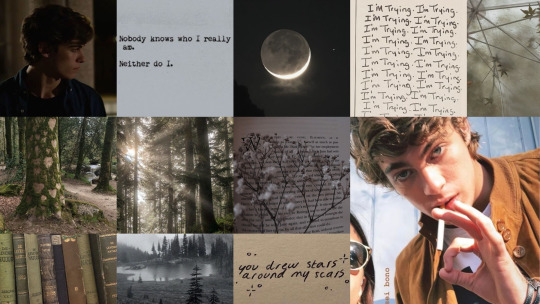
♢ Theo exudes a mysterious aura that perfectly complements the hauntingly beautiful storytelling of Taylor's Folklore era. Much like the enigmatic characters and eerie landscapes depicted in her album, Theodore is often found lost in thought, pondering the mysteries of the world around him. He's drawn to the darker, more introspective side of life, finding solace in the melancholy beauty of unanswered questions and unexplored realms.
♢ His fascination with folklore and mythology mirrors the themes explored in Folklore. He's often found immersed in ancient legends and forgotten tales, searching for hidden truths and untold stories buried beneath the surface. Theo understands the power of storytelling to connect us to our past and shape our understanding of the world, much like the evocative narratives woven throughout the Folklore era.
♢ Theo is known for his introspective nature, much like the reflective and introspective themes found in Folklore. He's not afraid to delve deep into his own emotions and experiences, exploring the complexities of the human psyche with a sense of curiosity and wonder. He finds beauty in the quiet moments of introspection, where he can unravel the mysteries of his own mind and soul.
♢ He shares a deep connection to nature, mirroring the rustic and atmospheric imagery of the album. He finds solace in the tranquility of the natural world, often retreating to the secluded forest to escape the chaos of everyday life. Theo understands the symbiotic relationship between humanity and the environment, finding inspiration and peace in the harmonious balance of nature.
♢ Theo has a love for storytelling that aligns with the narrative-driven approach of Taylor in this era. He's a master storyteller, weaving intricate tales of mystery and intrigue that captivate his audience and transport them to otherworldly realms. He understands the power of storytelling to transcend time and space, connecting us to our shared humanity and the timeless truths that bind us together.
#theo nott#theodore nott#theodore nott headcanons#headcanons#slytherin#slytherin boys#slytherin boys fandom#harry potter#moodboard#taylor swift#folklore era
128 notes
·
View notes
Text



Ais: Viking Era (about 800–1050 CE)
Description: The Viking culture emphasizes strength, independence, exploration, and a strong warrior culture. Ais' fierce and determined personality aligns well with the Viking ethos of bravery and combat prowess. The Viking Age's focus on personal valor and leadership in battle mirrors Ais' character strengths.
Leander: Victorian England (19th Century)
Description: The Victorian era is characterized by its distinct social norms, elaborate fashion, and a fascination with the occult and the supernatural. Leander's elegant and refined demeanor, combined with his darker, more mysterious undertones, align well with the Victorian fascination with both high society and the macabre.
Mhin: Edo Period Japan (17th Century)
Description: The Edo period in Japan is marked by its isolationist policies, the rise of the samurai, and a flourishing of traditional arts and culture. Mhin’s austere, reserved, and introspective nature fits well within the context of a samurai or an artisan during this period, reflecting the values of honor, precision, and a deep connection to family and traditions.
Kuras: Renaissance Italy (15th Century)
Description: The Renaissance era marks a period of great intellectual, artistic, and cultural growth. Kuras, with his intellectual depth, curiosity, and healing abilities, mirrors the Renaissance man – a scholar, a healer, and a seeker of knowledge and beauty.
Vere: Baroque Era (1600-1750)
Description: The Baroque era is characterized by its dramatic, detailed, and grandiose art and architecture. Vere’s flamboyant and theatrical personality, combined with his enigmatic and seductive nature, aligns well with the baroque emphasis on drama, emotion, and intricate details.
Bonus: Main Character (MC): Medieval Europe (12th Century)
Description: The Medieval era is known for its knights, castles, and chivalric codes, as well as a deep-rooted connection to mythology and folklore. It was a time when many individuals embarked on pilgrimages or traveled in search of remedies. This fits the MC’s background of seeking a solution regarding their curse. The era’s deep religious undertones align well with themes of faith and redemption, healing, and personal growth, honor-driven quests, meeting with different cultures, religions, and social classes.

#verewrites#red spring studios#touchstarved#ts#touchstarved headcanons#touchstarved game#touchstarved oneshot#headcannons#oneshot#vereletters#touchstarved theory#touchstarved theories#touchstarved ais theory#touchstarved vere theory#touchstarved kuras theory#touchstarved leander theory#touchstarved mhin theory#ts theory#ts theories#veresees#ais#vere#mhin#kuras#leander#ais touchstarved#kuras touchstarved#leander touchstarved#mhin touchstarved#vere touchstarved
78 notes
·
View notes
Text
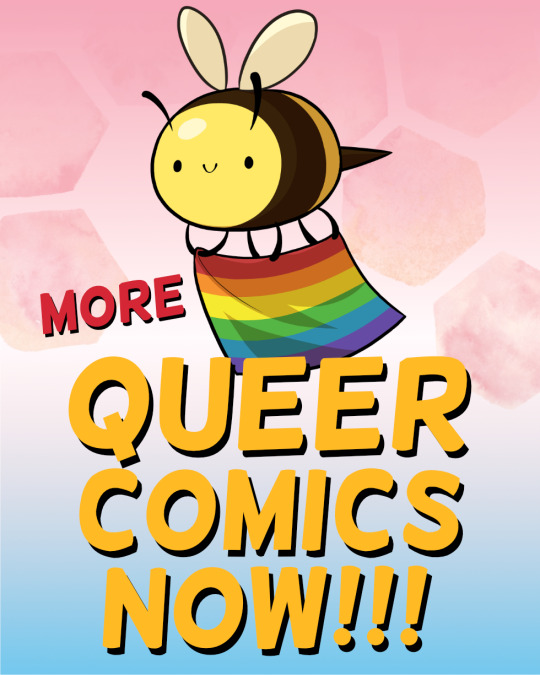
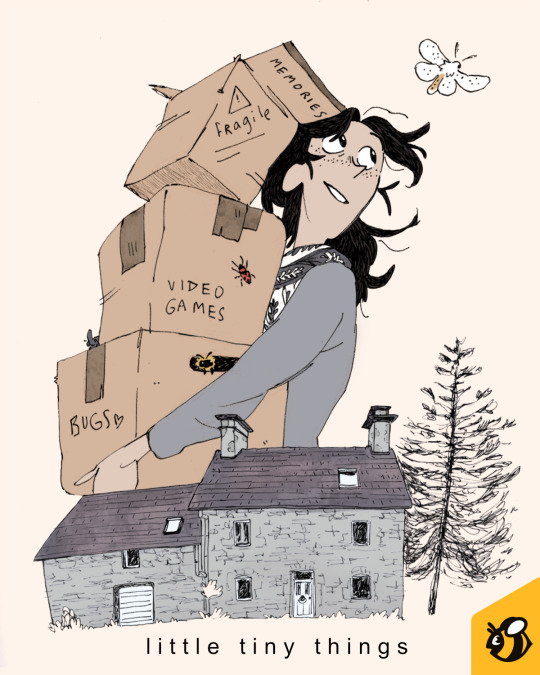


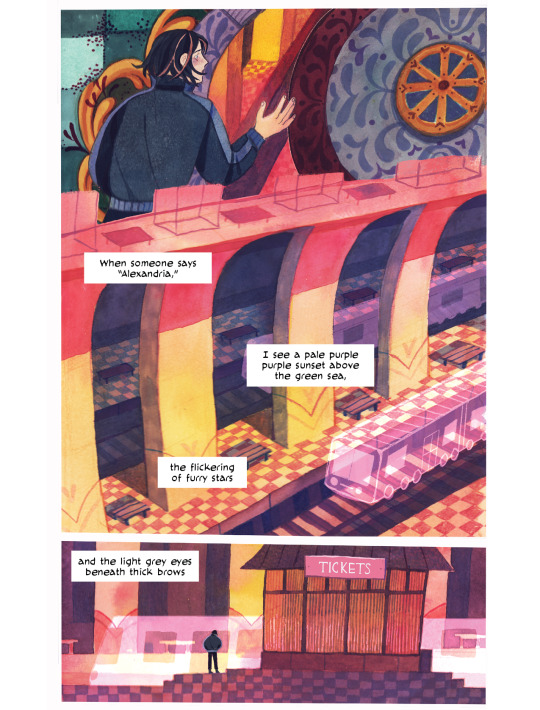
MORE #QueerComicsNow 🏳️🌈🏳️⚧️ Last week, we shared a spotlight on just a few of our comics with LGBTQ+ characters, creators, and themes. That's just the tip of the iceberg. We're back with another round of recommendations below!
Little Tiny Things by @cloverscomics
What are the little things that move us? The simple joys that warm our bodies and our hearts? The micro life of insects that influence our world more than we think? The tiny steps we make everyday to have a happier tomorrow? It's the Little, Tiny, Things.
Fairmeadow by @hagofbolding
Goma, a wayward Orcish soldier, finds herself in Fairmeadow, a commune of pacifists deep in the Cascadian wilderness. Isolation has allowed the commune to thrive in the shadow of a century-long war, but Goma’s arrival brings troubling reminders of the world outside to those who have settled there in search of respite. Fairmeadow’s enigmatic leader, Sanctuary, finds his utopian vision challenged as he struggles to keep the peace. Their self-sufficiency exists on thin margins - margins that threaten to break if Goma cannot learn to live alongside those who she has sworn to fight.
Fairmeadow is a post-epic fantasy drama inspired by the counter-cultural movements of the late 60’s, the landscapes of the Pacific Northwest, and tabletop RPG’s. It’s about the collision of idealism against pragmatism, reckoning with the consequences of dropping out, and trying to make its readers want to go on a hike.
Magical How? by @eyugho
Gabe and Booker were just regular guys until a golf ball appears, offering them magical abilities. Booker does not want to get into this at all, but Gabe takes the bracelet and transforms into a Magical... complete with uniform!
Gzhel Guardian by Atla Hrafney & Anya
Deep underground, in a place far away from our world, exists the Railway System. A complex, mysterious network of trains, towns and mechanical monsters, these communities are open and known only to a few on Earth. Central to these communities are Guardians, people chosen at random and adorned with power. Leo is one such Guardian, and even though their burn-out and depression has taken hold of them, they have one last job to finish.
Gzhel Guardian is a Russian fantasy LGBT+ webcomic inspired by folklore and illustrated in gorgeous watercolor pages.
#queer comics#pride month#lgbt comic#lgbt art#webcomics#gzhel guardian#magical how#fairmeadow#little tiny things
490 notes
·
View notes
Text
Werewolf or Dogman?
These two types of creatures get mixed up a lot. You are better off facing a dogman rather than a werewolf.
From the essay:
Werewolves and dogmen, rooted in folklore and popular culture, differ in traits and histories. Werewolves, originating in European folklore, symbolize the struggle between humanity and bestiality, often associated with historical and supernatural causes. Dogmen, a North American phenomenon, embody enigmatic aspects of the wild and nature, evoking dread and mystery.
43 notes
·
View notes
Text

The Fetch [Irish/Scottish folklore]
Imagine unexpectedly meeting a dear friend, who seemingly crossed paths with you by pure coincidence. But something’s wrong: the friend is acting weird and you get the feeling that you’re not talking to someone you’ve known for a long time, but rather an exact copy of that person. This, in old Irish folklore, is the Fetch: an enigmatic being that copies a living person down to the smallest details.
While the Fetch was always regarded as an omen of sorts, John O’ Hanlon made an important addition in his 1870 book ‘Irish Folk Lore’: according to him, the person whose future the Fetch predicts is not the one who sees the omen. Instead, the creature will appear as an exact copy of someone and will then appear to a close friend of the one he copied. This will often be a strangely sudden and mysterious meeting. If this friend sees the Fetch in the morning, this will not affect him, but the person who was copied will live a long and prosperous life. If the friend sees the Fetch at night, the person who was copied will die soon, but the person who sees the apparition will not be affected either way.
According to Feats, belief in the Irish Fetch was also commonly found in Scotland. This claim might have been derived from a statement by O’Hanlon that the Fetch is related to a similar Scottish spirit.
Sources:
Kinahan, F., 1983, Armchair Folklore: Yeats and the Textual Sources of “Fairy and Folk Tales of the Irish Peasantry”, Proceedings of the Royal Irish Academy, Section C: Archaeology, Celtic Studies, History, Linguistics, Literature, Vol. 83C, pp. 255-267.
Yeats, W., 1993, Writings on Irish Folklore, Legend and Myth, Penguin UK, 496 pp. (this is a collection of Yeats’ writings from the late 19th and early 20th century.)
(image source: ‘How They Met Themselves’, 1864 watercolor painting by Dante Rossetti. The painting is not meant to depict the Fetch spirit but I thought it fits well.)
161 notes
·
View notes
Text
On January 7th, we venerate Ancestor & Hoodoo Saint, Auntie Zora Neale Hurston on her 133rd birthday (updated 2024). 🎉
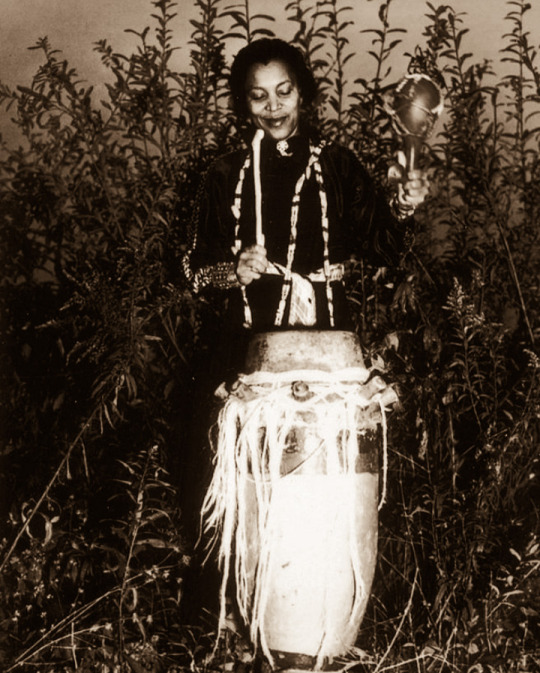
Novelist, Anthropologist, Folklorist, Scholar, Vodou initiate & Historian, Zora Neale Hurston's legacy is forever cemented in Hoodoo Culture (and beyond) as the masterful wordsmith who cast a shining light on black excellence in all everyday forms/spaces, our ATR roots, & the preservation of Black Voices during the prime of the Harlem Renaissance.
Auntie Zora was born in Notasulga, AL and raised on 5 acres of land in Eatonville, FL by her preacher-father and free-spirited mother ; in what would be the first all-Black township in the country. After the shattering loss of her mother, Zora turned up in Baltimore, MD where she presented herself as a 16 year old (10 years her junior) in order to access free public school education resources; thereby finishing school. From then on, Zora lived her life presenting herself as 10 years younger than she actually was. She'd go on to graduate from Barnard College in 1928.
She published several novellas & articles, including "Mules & Men"; a collection of Hoodoo Folklore. She entered the zenith of her career in the late 30s/40s after publishing her masterworks: "Their Eyes Were Watching God", "Tell My Horse", "Moses, Man of the Mountain", & an anthropological study on Hatian Vodou .After publishing her autobiography, "Dust Tracks on a Road, "Auntie Zora finally received the public recognition & literary respect that was long overdue. Despite her successes, and unprecedented contributions in classic literature & anthropology, Zora never received the financial contributions that her work so deserved.
Zora Neale Hurston passed away; penniless, alone, & drifting into obscurity. Friends and supporters from near and far raised $600 for her funeral service and burial. She was buried in an unmarked grave, in a segregated section, at the Garden Of Heavenly Peace Cemetery in Fort Pierce, FL. Over a decade later, in 1973 the Great Alice Walker found the unmarked grave and ordered a headstone to be placed on it; engraved with, "Genius Of The South" in Zora's honor. It remains in place today.
“Let no Negro celebrity, no matter what financial condition they might be in at death, lie in inconspicuous forgetfulness. We must assume the responsibility of their graves being known and honored.” - Zora Neale Hurston to W.E.B. Dubois
Auntie Zora wanted to be remembered & demanded that the same honor and respect be given unto her peers & others. Never forget the infectious voice that defined & defied, inspired & struck fear in many hearts of her time & after.
We pour libations & give 💐 today as we celebrate Auntie Zora for her enigmatic spirit, ancestral wisdom, labor of love for Hoodoo Folklore, & for the seeing the beauty in the dark, sometimes solemn, corners in Black Culture. Let her studies continue to inform our own. Let her spark a fire in us to reconnect to our roots & grow within our lineages.
Offering suggestions: money, music, read/share her work, libations of water, & flowers.
‼️Note: offering suggestions are just that & strictly for veneration purposes only. Never attempt to conjure up any spirit or entity without proper divination/Mediumship counsel.‼️
#hoodoo Saints#Hoodoo Saint#zora neale hurston#Hoodoo#vodou#haitian vodou#the hoodoo calendar#hoodoohistory#hoodoos#atrs#atr#hoodoo culture#bvm#Hoodoo Folklore#Black authors#Black writers#own voices#Black Power
716 notes
·
View notes
Text
✨ Tag Yourself: Fae Edition ✨
Pixie: You're the mischievous sprite, a tiny creature that delights in playful pranks and hidden treasures. Like a pixie, you bring a touch of magic and lightheartedness to every moment. Your laughter is infectious, and you find joy in the simple pleasures of life.
Nymph: You're the guardian of the forests, a nymph that embodies the spirit of the wild. Like a woodland nymph, you are deeply connected to nature and radiate an ethereal beauty. Your presence brings a sense of serenity and an appreciation for the natural world.
Seelie Fae: You are the epitome of grace and courtly manners, a member of the Seelie Court. Like a fae noble, you exude elegance and charm, enchanting those around you with your refined taste and sophistication. You bring a touch of regal splendor to every gathering.
Unseelie Fae: You're the mysterious and enigmatic Unseelie fae, a creature of the shadows and the unknown. Like the darker side of fae folklore, you intrigue and captivate with your secrets and unconventional charm. Your complexity adds depth and a sense of allure to your persona.
Brownie: You are the humble and helpful brownie, a creature of service and goodwill. Like a brownie, you take joy in aiding others and making their lives better. Your kindness and willingness to lend a hand make you a cherished friend and companion.
Sidhe: You are the royal ruler of the fae, a member of the Sidhe, and your presence commands respect and admiration. Like a Sidhe, you possess an otherworldly beauty and a regal air. Your charisma and leadership qualities make you a natural leader among your peers.
Selkie: You are a selkie, a creature that straddles the worlds of the sea and the land. Like a selkie, you embody adaptability and a deep connection to your emotions. Your ability to navigate the complexities of life's tides and currents sets you apart.
Gnome: You're the earthy caretaker of hidden gardens, a gnome who finds solace in cultivating the land. Like a gnome, you have a green thumb and a deep appreciation for the growth and beauty of the natural world. Your nurturing spirit brings life and color to every corner you touch.
Changeling: You're a master of adaptability, a changeling with a talent for blending in. Like a changeling, you have a unique ability to take on different personas and fit seamlessly into any situation. Your versatility and keen intuition make you a social chameleon.
Kelpie: You are the alluring and dangerous Kelpie, a water spirit that lures with beauty and deceit. Like a Kelpie, you possess an irresistible charm, but there's a hint of danger beneath your surface. You captivate those who dare to come close, drawing them into your world of wonder.
109 notes
·
View notes